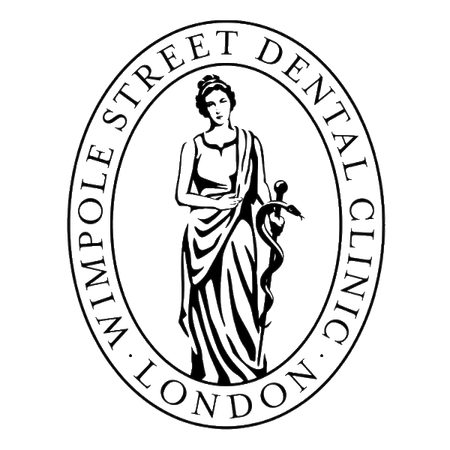Dental Abscess
A dental abscess is the term given when pus accumulates inside teeth, gums, or bone in the dental region. Dental abscesses can be particularly painful if left untreated, though the early stages of an abscess might be pain-free and undetectable.

What is a dental abscess?
A dental abscess is caused by bacterial infection. If you think you may have a dental abscess or experience any of the symptoms below, you should look to arrange an appointment with our dentists as soon as possible as to avoid further pain and discomfort and to stop the infection from spreading. If left untreated, this could potentially become a life-threatening condition.
Symptoms of a dental abscess
Dental abscesses occur when a tooth, gum or bone supporting your teeth becomes infected. Patients with a dental abscess can often experience a mix of symptoms including:
- Sharp and throbbing pain that comes and goes at the affected tooth or gum. The pain may often be most noticeable when you’re lying down or exerting pressure onto your jaw. The pain may also noticeably spread in the surrounding area e.g., neck, jaw and even ear
- Swollen or red face or gums
- Fever
- Sensitive teeth e.g., sensitive to hot or cold as well as chewing or biting
- Swollen lymph nodes under your neck or jaw
- A tooth may appear to be loose or slightly discoloured
- A particularly foul taste in your mouth that may result in bad breath
- Difficulty breathing or swallowing
If you experience severe fever, swelling of the face or extreme difficulty breathing, you should attempt to see a doctor immediately.
What causes dental abscesses?
Dental abscesses are bacterial infections that happen when bacteria invade the dental pulp (the inside of the tooth comprised of nerves, tissue, and blood vessels). Typically for an abscess to occur, the tooth has to be necrotic (dead) and bacteria have managed to access its inside via cavities, poorly fitted restorations, or cracks.
There are several potential causes that can increase the risk of a tooth or gum abscess (also known as a periodontal abscess):
- Failed root canal treatment – if the tooth has had a root canal treatment that didn’t manage to disinfect its inside adequately, surviving bacteria can one day flare up resulting in a dental abscess.
- Pulp necrosis due to old filling or crown – dental restorations which are not impeccable result in an open door for bacteria to insult the dental pulp. This can lead to silent necrosis which one day results in a dental abscess.
- Injury or trauma – sudden trauma to your teeth or gums such as cracking or chipping a tooth can allow the bacteria to infect the dental pulp. You should also see your dentist to take preventative measures when you suffer any form of oral trauma.
- Too much sugar – consuming too much sugar as part of your diet can lead to decay and cavities that allow bacteria to easily invade your dental pulp. Drinking too many fizzy drinks and eating foods high in sugar is likely to weaken your teeth.
- Poor oral hygiene – abcesses sometimes have periodontal (gum) origin and are related to gum disease and poor oral hygiene. Regular check-up appointments with your dentist and hygienist will help monitor, and prevent, the early signs of poor oral hygiene.
- Weak immune system – patients who have a weakened immune system (potentially caused by underlying health conditions like diabetes or after undergoing treatment such as chemotherapy) may be more susceptible to bacterial infection. Speak with your dentist and/or GP for guidance on preventative measures you can take to try to avoid a dental abscess.
Treatment for an abscess in the mouth
Unfortunately, there is no quick and easy way to treat an abscess in the mouth. Taking preventative steps as mentioned above is the best way to avoid an abscess in the first place.
If you suspect that you have a dental abscess you should look to make an appointment with your dentist as soon as possible as to avoid the infection from spreading or becoming more complex. Your dentist will then be able to judge what the best treatment option is available.
In most instances, a dental abscess is treated by:
Your dentist will then be able to judge what the best treatment option is available. Dental treatment options available to you include:
Incision & drainage
A dentist will make a small cut, or incision, into the gum in order to drain the pus from the abscess. This should relieve some of the discomfort (but won’t resolve the issue permanently).
Root canal treatment
Root canal may be required to remove the abscess from the affected tooth. This is the most common course of treatment for dental abscesses. The treatment involves cleaning out the bacteria from the tooth and then filling and sealing the affected area. Saving teeth is our utmost priority and Root canal therapy is almost always preferable to extraction.
Tooth extraction
If root canal treatment isn’t possible, for instance in the case of severe cracks, fractures or recurrent previous failures then perhaps the best way to treat the abscess is to extract the tooth entirely.
New page design
Written by: Prof Dr Christian Mehl
Medically reviewed by: Dr Raul Costa
Original content created
Written by: Prof Dr Christian Mehl
Medically reviewed by: Dr Raul Costa
Wimpole St Dental Clinic has strict sourcing guidelines and relies on peer-reviewed studies, academic research institutions, and medical associations. We avoid using tertiary references. You can learn more about how we ensure our content is accurate and current by reading our editorial policy.

